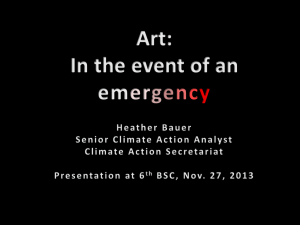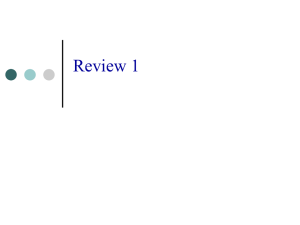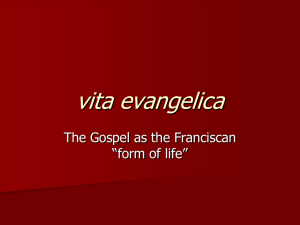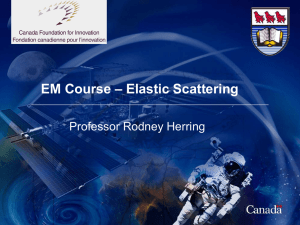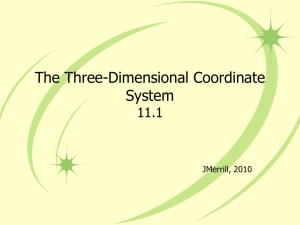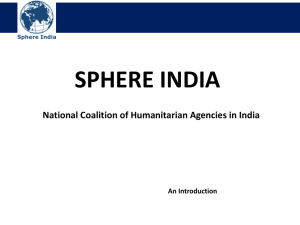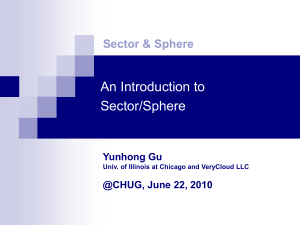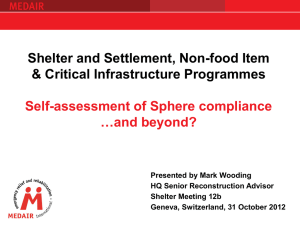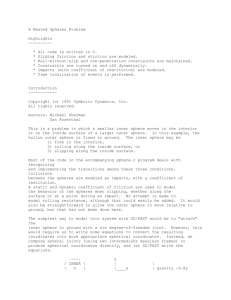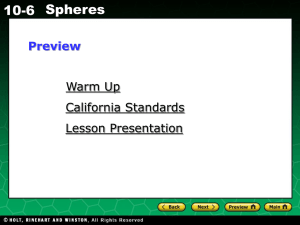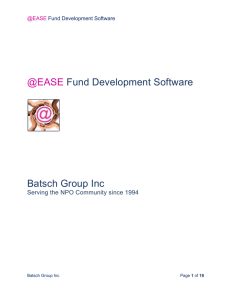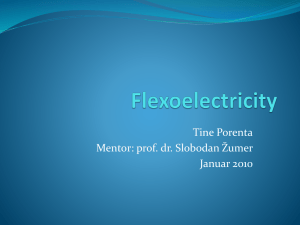How Leaders From Diverse Backgrounds Succeed
advertisement
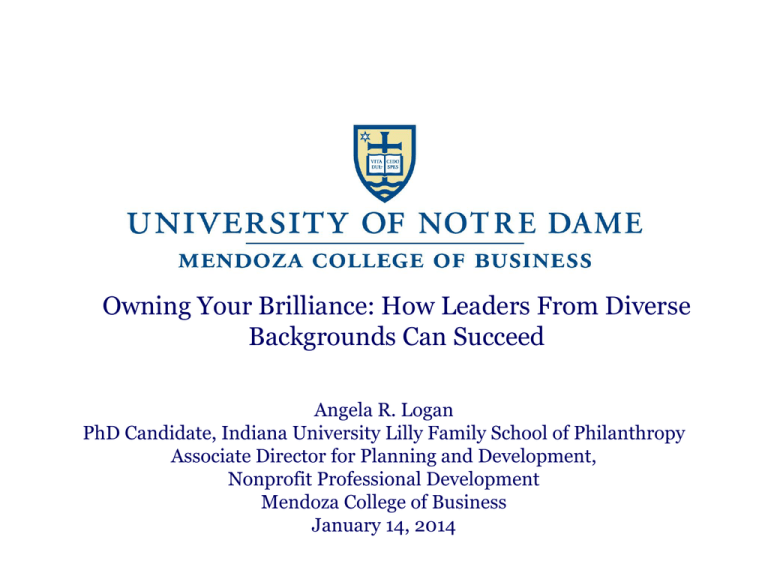
Owning Your Brilliance: How Leaders From Diverse Backgrounds Can Succeed Angela R. Logan PhD Candidate, Indiana University Lilly Family School of Philanthropy Associate Director for Planning and Development, Nonprofit Professional Development Mendoza College of Business January 14, 2014 Topics to be Addressed • Tips and Strategies to: • Promote the Successful Integration of the Private World and the Public Sphere • Increase Effective Communication • Promote Adequate Stress Management • Increase Networking Skills • Other Tips and Strategies to Promote “Owning Your Brilliance” 2 SELF-AWARENESS EXERCISE: IDENTITY CIRCLES 3 Private World Meets Public Sphere Demographics • Four generations in the workplace (Silent, Boomers, Gen X, Millenials) • Racial and ethnic demographics • Gender imbalance in nonprofit sector • Diversity vs. Inclusion • “Melting Pot vs. Salad Bowl” • 4 Private World Meets Public Sphere • Artifacts of Our Private World include: • Communication and Language • Food • Relationships: Family and Friends • Values and Norms • Beliefs and Attitudes • Learning Styles • Habits and Practices 5 Private World Meets Public Sphere • Leaders who are self-aware understand how they were socialized and what influences made them who they are. • Family influences • Personal experiences • Educational experiences • Peer influences • Media influences • Critical incidents 6 Private World Meets Public Sphere • http://youtu.be/O7fXfCZ4sB4 7 • • • • • • • Items in an Inclusive Leader’s Toolbox Critical in the Public Sphere Self- awareness skills Listening Empathy Nonverbal communication Understanding different communication styles Effective communication skills Leadership skills 8 CULTURAL IDENTITY EXERCISE 9 EFFECTIVE COMMUNICATION 10 Effective Communication • What Works and Why? • Option #1: http://youtu.be/IPIvwu-573Y • Option #2: http://youtu.be/d6wRkzCW5qI 11 Effective Communication • Communication in General • It is difficult to communicate TOO MUCH information • Clarity is more important than quantity • “Less-is-more” is important for vision/mission/value statements 12 Effective Communication • Oral Communication: Informal • Don’t just talk to friends and supporters: consult your critics, competitors, and consumers • In large organizations, talk to people in other regions and field offices REGULARLY 13 Effective Communication • Oral Communication: Formal • When talking in groups, use: • Memorable idea, prop, or story to emphasize your major points • Expressions of interest or passion for the topic • A simple but clear structure • One or more practice sessions to rehearse 14 Effective Communication • Written Messages • Never say anything in an email, FB post, or Tweet you wouldn’t want your grandmother, spiritual leader, mentor, or supervisor to read • Think before you hit “Send” 15 Effective Communication • Written Messages, cont. • When possible, give drafts of important documents to others to proof and critique • Re-read your draft after several hours have gone by. If it is very important, read it the next day • Read it once for grammar and once for meaning 16 Effective Communication • Listening • There is no substitute for taking a genuine interest in what others have to say • When possible, paraphrase/parrot to ensure accurate understanding: “So what you are saying is…” • Try to build off of others’ ideas 17 Effective Communication • Nonverbal Messages • Remember that alertness and attention to tasks often say more than words • “It’s Written All Over Your Face…you don’t have to say a word!” 18 Stress Management/Self-Care • Three Most Common Ways to Deal with Stress: • Foot on the gas • Foot on the brake • Foot on both gas and brake 19 Stress Management/Self-Care • “One of the first things most of us do when children (or adults) are overwhelmed with inner turbulence is: we instinctively try to calm them down into a state of ease before starting to sort out solutions.” • Doc Childre, founder of HeartMath 20 Benefits of “The Inner Ease Space” • Creates “flow” by helping to regulate the balance and cooperation between our heart, mind, and emotions • Helps attune our mental and emotional nature to the most reasonable and effective way to respond • Challenging, Normal, Creative 21 Benefits of “The Inner Ease Space” • • Prevents and eliminates personal stress and facilitates quicker recovery to unexpected stressors Effective during prep before engaging in potentially stressful situations 22 Benefits of “The Inner Ease Space” • • Shifting to the inner-ease space at the onset helps prevent stressful scenarios Easier to include the heart’s intelligence to situations 23 INNER EASE EXERCISE 24 Other Stress Management Strategies • GPS4Soul • Communicate/interact with others • Re-open the heart feeling • Practice gratitude • Decrease drama • Manage your reactions • Prayer or meditation • Heart-focused breathing • Sleep • Exercise • Reduce comparing the present to the past • Reduce fear • Engage with your family/close friends • Don’t blame yourself • Write a letter from your heart to yourself 25 Networks: How Deep Is Your Bench? • • • Look for occasions to make linkages and to stay in touch with outside contacts Provide assistance for others Choose strategic alliances for joint collaborations 26 NETWORK CHECK-UP: EXERCISE 27 Other Leadership Tips and Strategies • • • • • • • • http://youtu.be/guA_4AzXqh0 Flaunt your honesty. Focus on your people. Develop a personal mission. Correct negative habits and behaviors. Invest in training. Retain high performers. HAVE FUN! 28 Summary • • • • Integrating one’s private world into one’s public sphere can make an organization stronger Effective communication is key to successful leadership Stress management is vital to a leader’s survival Networking makes leading easier 29 Resources • • • • • • • • • • • • Avolio, B. and Yammarino, F. (2012). Transformational and Charismatic Leadership: The Road Ahead. Emerald Group Publishing. Campus Outreach Opportunity League (2000). Civic Engagement Curriculum. Childre, D. (2008). “De-Stress Kit for the Changing Times.” Boulder Creek, CO: Institute of Heart Math. Childre, D. (2010). “The State of Ease.” Boulder Creek, CO: Institute of Heart Math. Covey, S. (2004). The 7 Habits of Highly Effective People. New York: Free Press. Davis-Laack, P. (2012). “7 Things Successful Leaders Do Differently,” Psychology Today, retrieved October 1, 2013, http://www.psychologytoday.com/blog/pressure-proof/201206/7-things-successfulleaders-do-differently Goleman, D. (2004). “What Makes a Leader?”, Harvard Business Review On Point, January 2004. Kouzes, J. and Posner, B. (2012). The Leadership Challenge: 5th Edition. Josey-Bass. Segal J. and Smith, M. (2013) “Conflict Resolution Skills,” HelpGuide.org, retrieved October 16, 2013, http://helpguide.org/mental/eq8_conflict_resolution.htm Sonnenschein, W. (1997). Practical Executive and Workforce Diversity. Lincolnwood, Illinois: NTC Business Books. Van Wart, M. (2005). Dynamics of Leadership in Public Service: Theory and Practice. Armonk, New York: M.E. Sharp. Wolf, J. (2013). “Leadership in Crisis: Take 8 Steps to Avoid Pitfalls,” Wolf in the Workplace, retrieved October 16, 2013, http://www.wolfmotivation.com/articles/leadership-in-crisis-take-8-steps-to-avoidpitfalls 30




